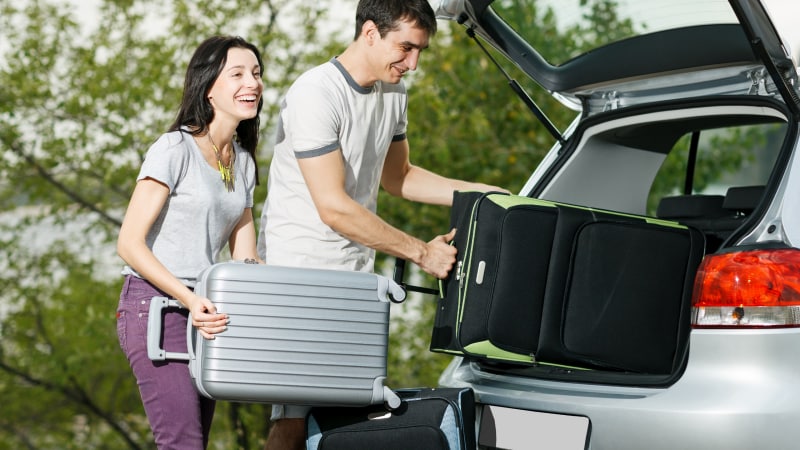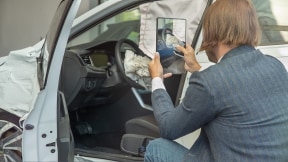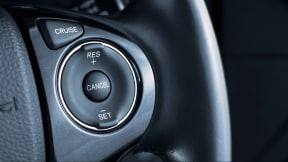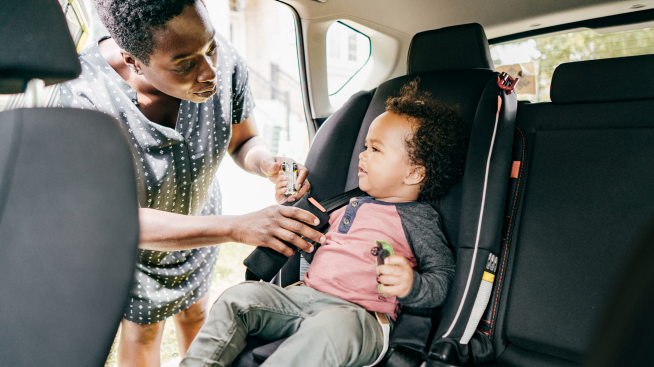Road trip essentials: How to plan and pack

Road trips are a time-honored tradition and have seen a resurgence in popularity over the last few years as more people hit the open road to look for adventure. Particularly as the weather starts getting warmer, you may find yourself increasingly tempted to pack up your car and get out there, too. Before you do, however, you may want to put together a plan and a packing list.
How to plan a road trip
One of the keys to a great road trip is to have a good plan in place. Though it’s important to leave some room for spontaneous adventures, being properly prepared may help you get the most out of your trip, especially when it comes to keeping you and your vehicle in top shape. One way to get started is to ask yourself some helpful questions:
Where are you going?
Every journey needs a destination, after all. If this is your first road trip, it may be nice to start with somewhere that isn’t too far away. You could try visiting a nearby city for a quick day trip, spending a few hours there before driving back the same day.
How will you get there?
The next step in your road trip adventure is to pre-plan your route. You can look up attractions and strategic pit stops along the way to see if you want to make any detours. Sometimes, you may want to take the most interesting route instead of the fastest one. Most mapping apps support adding waypoints to your route, so you don’t have to miss out on something fun because it isn’t exactly along the way.
If your goal is to have a leisurely trip, you might consider limiting your driving time to just three to six hours per day. While planning your drive, you may also want to account for time spent on refueling, eating and trips to the restroom. Particularly when traveling with families, planning well may help prevent passengers from getting too fatigued from being in the car.
What are you driving?
Not every car is well-suited to a long road trip, so keep in mind the type of car you drive. Sports cars can be a joy to drive along the open road but may be less comfortable if you’re going camping and hiking along the way. If you’ve got multiple people coming along, you may want an SUV or minivan to fit everyone and their stuff. Gas mileage is another important consideration for your road trip travel budget. You may also want to consider a tune-up before you hit the road to avoid any surprise expenses.
What are you bringing?
Entire novels exist on what to pack for a road trip. To get straight to the good stuff, here are some items worth mentioning:
- Car maintenance kit: A spare tire, toolbox and extra fluids like coolants or a gas canister can be helpful during an emergency on the road. It’s also smart to have your car’s documentation and a spare key on a different keychain. Owning a water-resistant flashlight can also be useful — breakdowns love to happen on rainy nights.
- First aid: A basic first aid kit can help you stay ready for some emergencies. Without one, even a relatively minor injury might end up derailing the day. It’s always smart to check and restock the first aid kit before setting out on your road trip.
- Clothing: Bring clothing that’s appropriate for the places you’ll be. You won’t need fur hats and hiking boots in Miami Beach, or a ballgown while camping in Oregon. In summer, consider packing a warm item like a sweater or blanket just in case the weather turns on you. Pro tip: Many hotels and short-term vacation rentals are equipped with laundry facilities. Staying at these on your trip can help you pack fewer outfits while still always wearing clean clothes.
- Food: You won’t always have a restaurant within driving distance on the open road. Alternatively, you may not want the fast-food options that are most common at rest stops. Packing some non-perishable snacks like jerky or trail mix may help you save a few bucks and a few stops along the way. They’re also easy to store. If you invest in a small cooler box, you can even pack fresh food like fruit or cold cuts for sandwiches. Add a portable grill to the list and you could have some steaks for dinner, roadside.
- Electronics and chargers: You’re going to need a car charger to keep your phone and other devices juiced up on the long drive. You may even consider external power banks or car power inverters if you’ve got other electronics or multiple users. A hands-free phone mount will also make driving and navigating a lot easier.
- Entertainment: Whether you’re traveling solo or with other people, a long drive can get pretty dull without some entertainment, so music is a must. These days, that mostly means setting up your playlists and getting an AUX cable to link up to the car stereo. If you prefer to keep it classic though, it could also include organizing your CD collection. You might also consider bringing headphones, along with books, magazines and games.
- Extras: It’s also nice to have a few extra things that might come in handy like duct tape, a multitool of some kind, and an organizer for your car’s storage space. Finally, it never hurts to have a physical map, despite the prevalence of digital maps on our smartphones. You’ll likely use your phone’s GPS to navigate most of the time, but paper maps of the region you’re in will be invaluable if you drive through a dead zone.
Should I rent a car for a road trip?
If you don’t have a car or decide your current vehicle isn’t the best choice for your trip, then a rental may be worth considering. Another common scenario for car rentals is if you’re traveling somewhere first and then starting your road trip. As long as the vehicle you drive is safe, comfortable and suitable for the trip you’re taking, the decision is ultimately yours.
How to check road conditions for a trip
Checking weather and road conditions before you start driving can help you stay safe, and there are several ways to do so. You can start by dialing 511, which links directly to the U.S. Department of Transportation’s Federal Highway Administration and provides real-time information on road conditions, detours and closures.
In summary
Taking a road trip is among our great national pastimes, and for good reason. There’s a lot to see out there on the open road! From historic sights and magnificent natural vistas to weird and wacky oddities like giant balls of yarn, there are wonders waiting for you. Just remember that whether it’s a weekend jaunt or an extended cross-country drive, a little planning and prep beforehand can go a long way.



